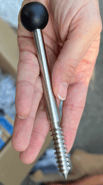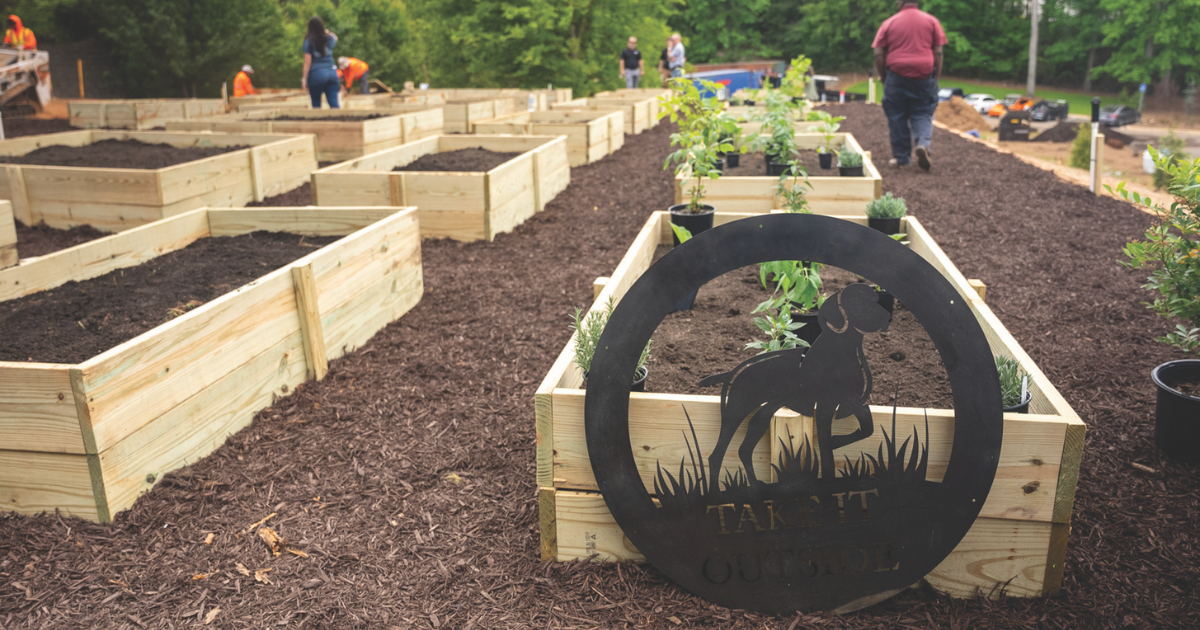Giving Back
Georgia Landscapers Take Philanthropy Outside In metro Atlanta, the outdoor service industry is sharing its time and talent to create meaningful...
These Iconic Trees are the Perfect Canvas for a Lighting Design
Brooke Inzerella, CEO of Horticare Landscape Company in Lafayette, Louisiana, has put in lighting for many live oak (Quercus virginiana) trees in his 16 years of business. However, when asked how to properly illuminate these majestic 40 to 100-plus-year-old trees, he says, “I’d be interested in seeing how a true lighting designer would suggest to do it.” These complex trees are a great example of how to think about lighting mathematically and get the most out of one dominant feature in a landscape.
Jon Bowman and Adam Dorumad of Coastal Source stepped in to light the way.
.png?width=910&height=630&name=Lighting%20the%20Oak%20(11).png) Before the lighting install, the oak tree blended in with the night
Before the lighting install, the oak tree blended in with the night
First, it’s best to consider the entire scope:
1. How do you want to view the tree? 360 degrees? Just from the street or all around the tree?
2. Do you have other lighting that will be different temperatures and need to mindful of?
3. Do you have other lighting to put in later that we have to consider?
4. Are there other lighting objectives like lighting the path to the front door?
5. How does street lighting affect the lighting that we are designing?
6. How will it be controlled? Dusk to dawn, timers, switches and where to tie in?
7. When was the tree pruned last? Should this be done prior to design and installation? Determine if pruning the tree will result in a better light throw.
8. Does the tree have interesting bark that warrents highlighting?
Identifying what the client wants and how they want to interact with the lighting can steer the design in different ways. Also, evaluating the tree (or other element) size, shape and overall health must be done so that the design can grow or change as the element changes.
The solution includes 14 lights with various cable splitters utilizing the patented Coastal Source cable and connections.
.png?width=1442&height=362&name=Lighting%20the%20Oak%20(13).png)
 Uplighting from the Ground
Uplighting from the Ground
Install six uplights under the canopy of the tree, around the base of this live oak tree with some 10 feet away from the trunk but with a 35-degree angle on the light itself. They are aimed upwards to highlight the canopy. Extra cabling should be used and coiled around the base of the fixture so that the lights can be adjusted wider as needed over time.
 Lighting Within the Tree
Lighting Within the Tree
The uniball mounts for the eight lights inside the canopy are very sleek and, with only one penetration in the tree, better for the tree itself. “We’ve consulted with many arborists through the development of these lights so that we get the best lighting solution but minimal harm,” Jon says. The fixtures screw into the tree and then the lights swivel (ball and socket) and can easily be adjusted after installation.
.png?width=1166&height=874&name=Lighting%20the%20Oak%20(3).png)
Cliff Istre and Stephen Champagne from Horticare were both impressed with this system. “Not only is it easy to install and adjust once installed, but with the cabling and splitters, we didn’t have to hide junction boxes,” Cliff, lead installer, explains. Four of the down lights have a shroud, and four of them have an extended shroud to reduce the potential of light glare. “The junction boxes are such an eyesore, we don’t like designing this into our projects, but this changes everything,” says Stephen, landscape architect.
.png?width=824&height=902&name=Lighting%20the%20Oak%20(6).png)
.png?width=794&height=782&name=Lighting%20the%20Oak%20(7).png)
.png?width=838&height=1076&name=Lighting%20the%20Oak%20(5).png)
.png?width=546&height=720&name=Lighting%20the%20Oak%20(4).png)
(First two images) Error Proof Connections, (Third picture) 3-way CMC Splitter
Brooke and his team have been using junction boxes that mount to the tree or at the base of the tree and then running the lights off of that.
"We have not installed a lot of downlighting
in our area. But there’s a need for it for sure."
.png?width=281&height=340&name=Lighting%20the%20Oak%20(9).png) Outcome
Outcome
“The angle of each light is critical so it’s doing its job, but not blinding you at the same time,” says Jon. “There is a real art to the installation—we give you the design layout and all the fittings and cabling to create that art. Many of the installers that are great at it can get about 90 percent right during the day, but they still have to come back at night and tweak the system. Adjustments like twisting the shroud on the light or swiveling the light slightly can make all the difference. Using typical fixtures and wiring is cumbersome and time consuming, usually twice as long, sometimes longer.”
.png?width=1526&height=1140&name=Lighting%20the%20Oak%20(1).png)
.png?width=1530&height=1140&name=Lighting%20the%20Oak%20(10).png)
Jon Bowman, VP of Inside Sales at Coastal Source
Phone: (800) 719–1996
Email: jbowman@coastalsource.com

Georgia Landscapers Take Philanthropy Outside In metro Atlanta, the outdoor service industry is sharing its time and talent to create meaningful...
